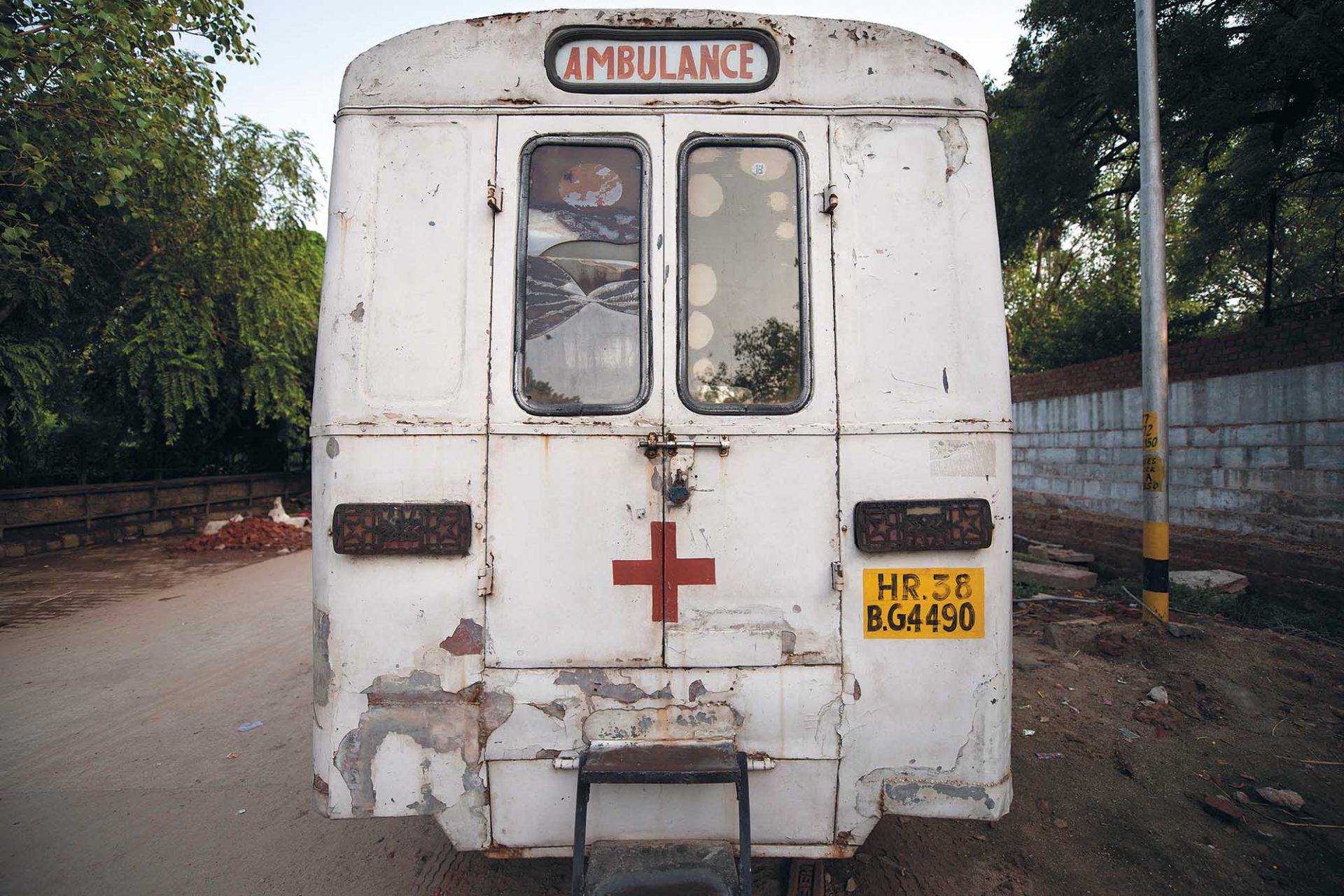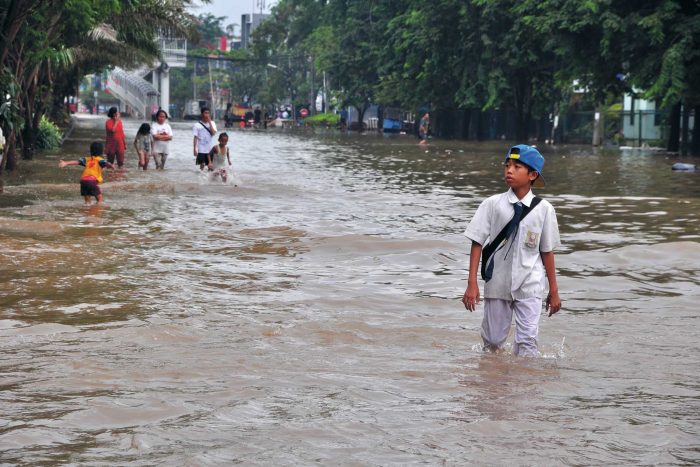Making Asia Fit for New Growth

The story of the remainder of the 21st century will be significantly determined by how we manage and harness continued economic growth to improve the health, environmental and social well-being of our region.
Wang Wei, a middle-aged man returning for the first time after 20 years to his family home in rural mainland China would be unprepared for the dramatic and disruptive change that has swept the country. Skyscrapers tower overheard. A web of new infrastructure cuts travel times in half, enabling rural residents to make the daily trip into town. In the city, restaurants and foreign brands abound on every street. A new hospital has gone up.
A hundred million family homes have changed in China and throughout Asia. Modern Asia and particularly China has disrupted poverty. This economic growth has opened new opportunities for work, living, housing and education. Yet flourishing economies can be a double-edged sword. Investing in public health has reduced maternal mortality, infant mortality rates and hunger-related deaths in low and middle-income countries (LMICs). But economic growth and improved living standards can also introduce new health challenges to overcome.
Traditionally, the health crises of developing countries have been driven by maternal and child mortality, as well as communicable diseases. Malaria, tuberculosis, and those caused by unclean water, such as cholera and typhoid, are enormous challenges. And new infectious disease threats like Zika and bird flu add additional strain.
New health challenges are emerging in Asia
The world’s attention has rightly been focused on fighting communicable diseases. But demographic, environmental and socioeconomic changes throughout Asia, due to rapid economic growth, are driving a new normal of non-communicable diseases (NCDs): especially heart disease and stroke, chronic lung diseases, diabetes, and mental illness, requiring immediate attention.
According to the World Health Organization, eight in 10 NCD deaths now occur in LMICs. For as much as NCDs get mislabeled as “diseases of affluence,” they are severely affecting the people of the developing world, in rural and urban communities. In both cases, the rapidly growing burden of treating and responding to NCDs is putting increasing pressure on already stretched resources and ailing health infrastructure. It is as big a change as those skyscrapers in Wang Fei’s hometown.
Beyond NCDs, preventable injuries account for one in 10 deaths globally, and incredibly, 40 per cent of deaths in adolescents and young people. As the world develops, workplace injuries and traffic accidents increase. More people have employment and mobility – but that comes with an increase in preventable injuries.
The new killers of NCDs and preventable injuries are redefining and disrupting “global health”. We are at an inflexion point in history. In 2011, the United Nations declared that NCDs pose a global threat, identifying them as one of the major challenges facing social and economic development globally, and as an important contributor to rising inequality.
Transitioning from a focus largely on communicable diseases to one that also includes NCDs and injury, conditions which drive the most causes of early death and chronic disability, is vital.
This has especially important ramifications for Australia, which plays a leadership role in regional and global settings. For years Australia’s health aid programs have focused primarily on the traditional aid concerns of poverty, hunger, communicable diseases, and maternal and child health, with additional investment in clean water and sanitation.
Proven, cost-effective interventions are available for these new pandemics, and Australia has considerable expertise to offer in tackling them. As this issue careens toward crisis status, pursuing effective and sustainable solutions is an urgent matter. It’s certainly a global health matter, but it is also an economic one. Consequently, Australia’s Department of Foreign Affairs and Trade (DFAT) views global development funding not only as a philanthropic exercise in global equity but also as a key arm of foreign policy.
Health aid is effective, delivering proven measurable returns on investment while lending itself well to public and private partnerships. It also has serious potential to prolong lives and promote regional stability. In an era of tight resources, health aid is an essential component of any development aid initiative.
The macroeconomic consequences of not acting are clear. The recent World Economic Forum paper on the economics of NCDs in Indonesia calculates that $US4.47 trillion in productivity will be lost due to NCDs ($US17,863 per capita) from 2012 through 2030.
Left unchecked, the NCD epidemic threatens to consume considerable health resources in those countries that can least afford it and are currently not well equipped to deal with it. The cost of not doing something will, in the end, be more costly than taking action now.
Health aid can deliver measurable economic returns
As the global health community confronts NCDs and preventable injuries, there’s an opportunity for two-way benefit between high- and low-income countries and in particular for Australian and Asian policymakers to share responsibility for advancing health initiatives focused on prevention and treatment of NCDs and injuries.
Australia has developed effective policies and high quality research that are predominantly focused on conditions, like NCDs and injuries, which are very relevant in high-income countries (HIC). And so, there exists an opportunity to assist Asia in further developing research capacity to address these issues.
To highlight one example, Australia has a presence in the Global Alliance for Chronic Diseases, which develops and facilitates innovative research collaborations between LMICs and HICs in the fight against NCDs. Another example is the DFAT’s contribution to the Global Innovation Fund, which invests in social innovations in all sectors (including health) being pioneered by social enterprises, for-profit firms, non-profit organisations, researchers and government agencies.
Both of these are examples of solutions-focused innovation. But more can be done.
Australia has led the world in public health policy for tobacco and is following up with action on food. Poor diet now kills more people than anything else in the world. Most of those deaths used to be caused by starvation but the great majority are now the consequence of over-eating. And more occur in Asia than in any other region. Excess consumption of sugars, salt, harmful fats and calories underpins the NCD epidemic and kills millions every year. Australia has implemented a world-leading ‘Health Star Rating’ food labeling strategy and is now embarking on a far-reaching Healthy Food Partnership, which provides a mechanism for collaboration between the government, public health sector and food industry to work together to address obesity. While the Partnership has much to offer the Australian public, the real opportunity lies in scaling the effective components beyond Australian borders.
Health solutions for the 21st Century
Australia can also share learnings around effective public education campaigns and legislative changes to promote health and public safety. Campaigns that capture public attention around wearing seatbelts, and not drinking and driving could have a powerful effect in countries where, although millions of new motorists are now on the road, safety norms are not yet widespread. According to the World Health Organization, low- and middle-income countries account for 90 per cent of the world’s traffic fatalities, while only accounting for half of the world’s vehicles. Indeed, affluence and progress bring a host of new challenges.
Australia’s challenges and experience in remote healthcare throughout its vast rural interior may be highly relevant to a country like China, where a city-dwelling son or daughter often has to look after elderly parents living in rural areas.
Confronting the challenge of prevention and control of NCDs really requires a robust primary care system, which is lacking in many Asian countries (China being one of the best exemplars). While Australian primary care is facing a number of challenges much of the decline in NCD mortality over recent decades can be attributed to a strong primary care system.
However, while Australia and other Western countries have much to offer in terms of expertise, resources and technologies, policymakers must step back and avoid making assumptions around what is the “right” way. Australia’s health institutions and systems face many challenges around equity, access and affordability. And health solutions have to be designed for – not in spite of – economic, geographic and cultural contexts. LMICs, with the support of HICs, must lead the way in forging their own solutions to meet the needs of their people. The benefits can be mutual. By working with LMICs and thinking outside the box, we just might discover opportunities for “reverse” innovation, in which solutions developed for LMICs could improve healthcare in countries like Australia as well.
In designing and implementing new health solutions, one of the most obvious things that needs to be considered is scalability and the blending of high tech/ low tech innovation. Take diabetes and a recent effort to develop an affordable dialysis machine that illustrates how simple, affordable technologies are able to make a significant difference in the lives of those who need kidney dialysis but cannot access it.
Millions of people globally – most of them in China, India, Indonesia, Pakistan and Nigeria – die unnecessarily every year because they cannot access treatment for kidney failure. Approximately 2.6 million people around the world are on chronic dialysis for terminal kidney failure, but as many as seven million people more could be missing out on life-saving treatment.
Geography is a barrier: large, sophisticated medical equipment can’t be transported cost-effectively to remote rural areas, nor properly maintained or operated outside of hospitals. In India, for example, 70 per cent of people with chronic kidney disease live in rural areas, with limited access to treatment.
However, lifesaving health solutions don’t necessarily have to be expensive or highly sophisticated. That’s why the George Institute, the International Society of Nephrology, and the Asian Pacific Society of Nephrology jointly launched the Affordable Dialysis Prize. This contest encouraged inventors around the world to develop an innovative dialysis system to treat chronic kidney failure that works just as well as a conventional approach, but (a) runs off solar power, (b) can purify water from any source, (c) has low running costs, and (d) can be sold for less than $US1,000.
The winning design is so compact that it can fit into a small suitcase, uses a standard solar panel to power a highly efficient, miniature distiller capable of producing pure water from any source. The design is rooted in the situational context of the people who will use it. And therefore, it can save the lives of millions of people every year who would otherwise die. It is truly revolutionary, and it serves as an excellent example – and sets a high standard of usability – for future health innovators to follow.
Innovation is likely to be key for LMIC populations to take charge of their own destinies. It also creates opportunities for developed economies to learn something new that might benefit existing healthcare systems.
In India, cardiovascular disease is the leading cause of premature death and disability. A lack of affordable, accessible health care exacerbates the problem. Enter the “ASHA,” an Accredited Social Health Activist who serves as a community health worker in areas where doctors are scarce and medical care is inaccessible.
More than 30 million Indians suffer a heart attack each year. ASHAs, often experienced in maternal and child health, are now using their experience to conduct household heart health checks. They carry out basic procedures like blood pressure and blood sugar measurement and use a mobile application to monitor these cardiovascular risks, make predictions of a patient’s risk of disease and appropriately refer those who need the care of a doctor.
These community health workers are a decidedly “low-tech” solution that leverages basic technology, and a pool of people who have some training and are willing to use their experience to better the health of their overall community.
The story of the remainder of the 21st century will be significantly determined by how we manage and harness continued economic growth to improvements across a range of environmental, social and health issues. Although NCDs and injuries aren’t always headline-grabbing, they will be a drag on economic prosperity and contribute to the cycle of poverty by robbing communities of citizens in their most productive years.
So can the disruption in Asia itself be disrupted? Will Wang Fei’s hometown be healthy in addition to being more modern? We’re at an inflexion point. One of the key themes will be the emergence of two-way relationships between low and high-income countries in which resources, ideas and transformative solutions flow both ways, and propel us toward a sustainable, healthier future.
In the meantime, aid programs and an aggressive focus on creative, unconventional solutions are a great start, and it requires fostering an ecosystem of collaboration between innovators, researchers, business leaders and government leaders working in concert with the healthcare delivery community to elevate each part of the system toward a greater whole. Ultimately, the active pursuit of the health and well-being of all members of the Asia-Pacific region will create a more prosperous future for all of us.













